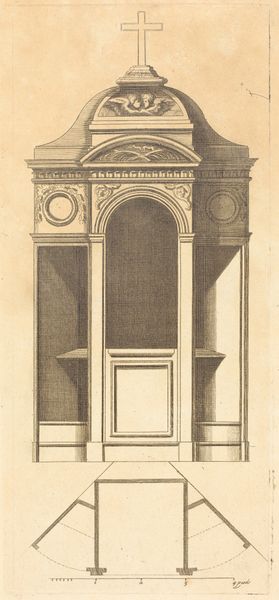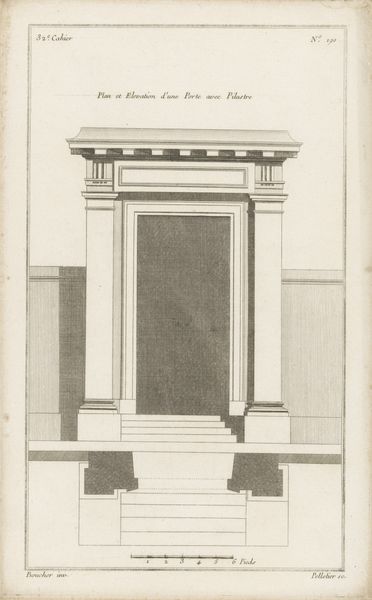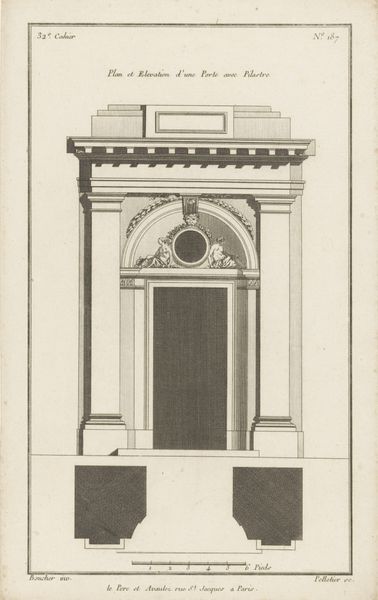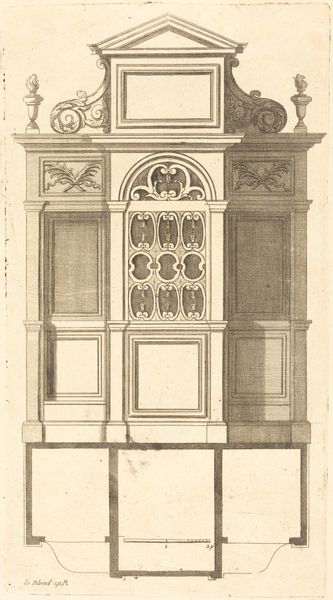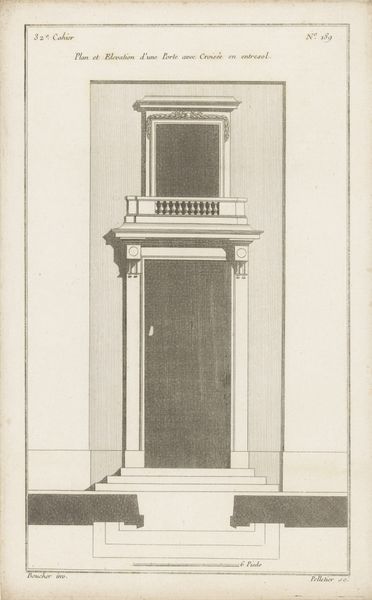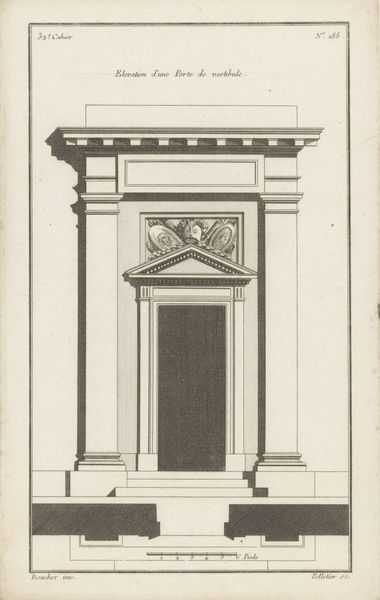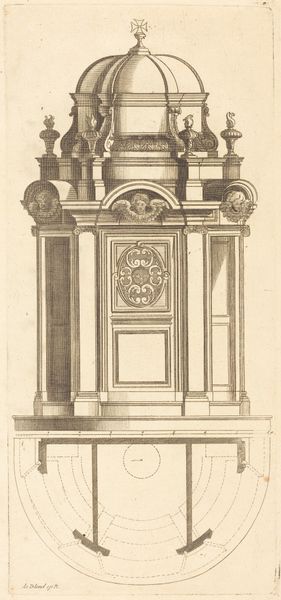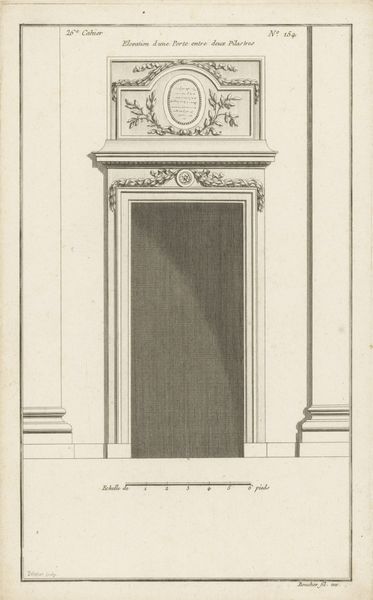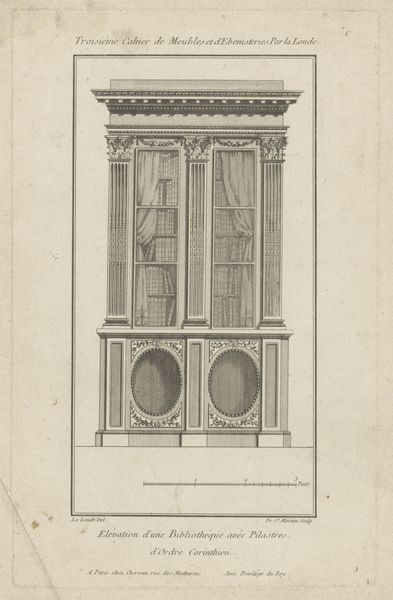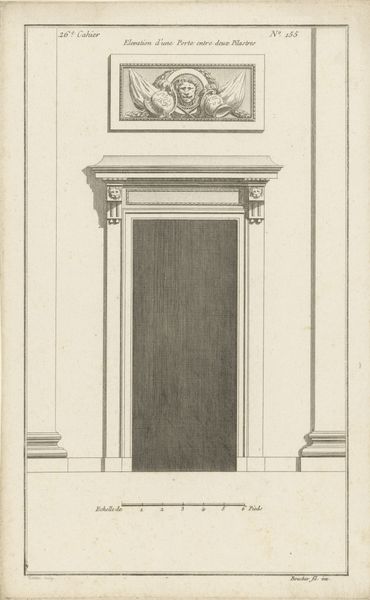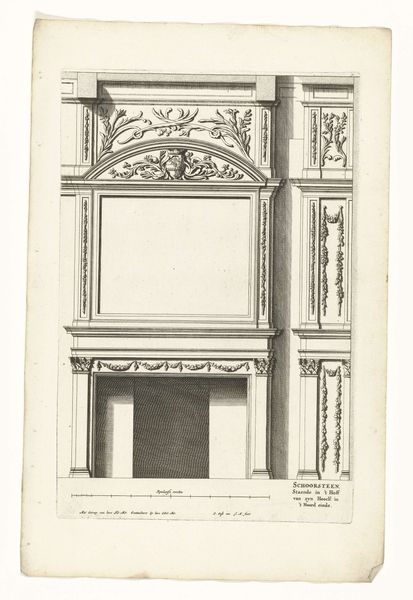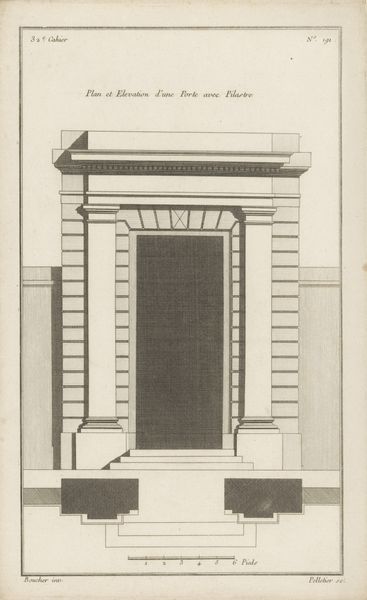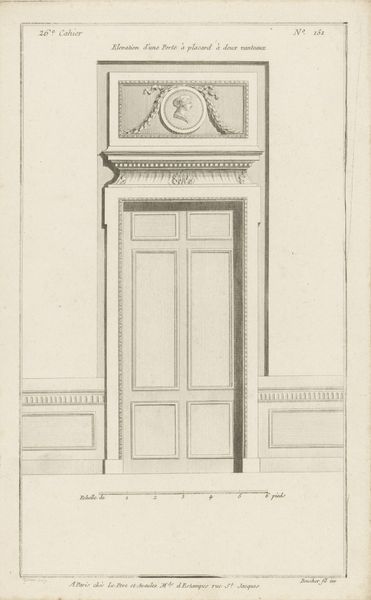
Plan et elevation des plus beaux confessionnaux de Paris, tres fidelemant mesure Possibly 1688
0:00
0:00
drawing, print, engraving, architecture
#
drawing
#
baroque
# print
#
engraving
#
architecture
Copyright: National Gallery of Art: CC0 1.0
Curator: What a meticulously detailed rendering. This engraving is titled "Plan et elevation des plus beaux confessionnaux de Paris, tres fidelemant mesure," dating possibly to 1688 and attributed to Jean Le Blond. Editor: Wow. It’s funny, seeing a confessional depicted with such architectural grandeur… almost theatrical. I feel like I’m peering into a sacred stage set. Curator: Indeed. The Baroque style, with its emphasis on ornamentation, served to visually reinforce the power and authority of the Church. Note the cherubic figures adorning the top, gazing down. Angels are not a mere decoration but serve as potent symbols, embodying divine presence. Consider the act of confession itself— revealing one's innermost thoughts and deeds— and how this architecture frames and mediates that experience. Editor: Right, they're like celestial eavesdroppers, ensuring everyone keeps it real. The space looks quite intimidating, not a comforting embrace but… more like an official tribunal. Curator: That's precisely the intention! There is order, formality and hierarchy— all reinforced visually. The plan also communicates a deliberate sense of separation— between the confessor and the confessed, which would encourage introspection and an appreciation of sacred space. The weight of expectation from both angles must have been immense, one a subject the other an all-knowing observer. Editor: Definitely takes 'bearing your soul' to another level. It’s clever how the physical structure creates a symbolic echo chamber of judgement, architectural form as psychological amplifier. Curator: Precisely. It’s not just a booth; it is a spatial embodiment of power and moral framework. And that interplay of design and function… so much more complex than it first appears. Editor: So much guilt and grandeur captured in one precise print. Leaves you wanting to know the untold stories whispered within.
Comments
No comments
Be the first to comment and join the conversation on the ultimate creative platform.
